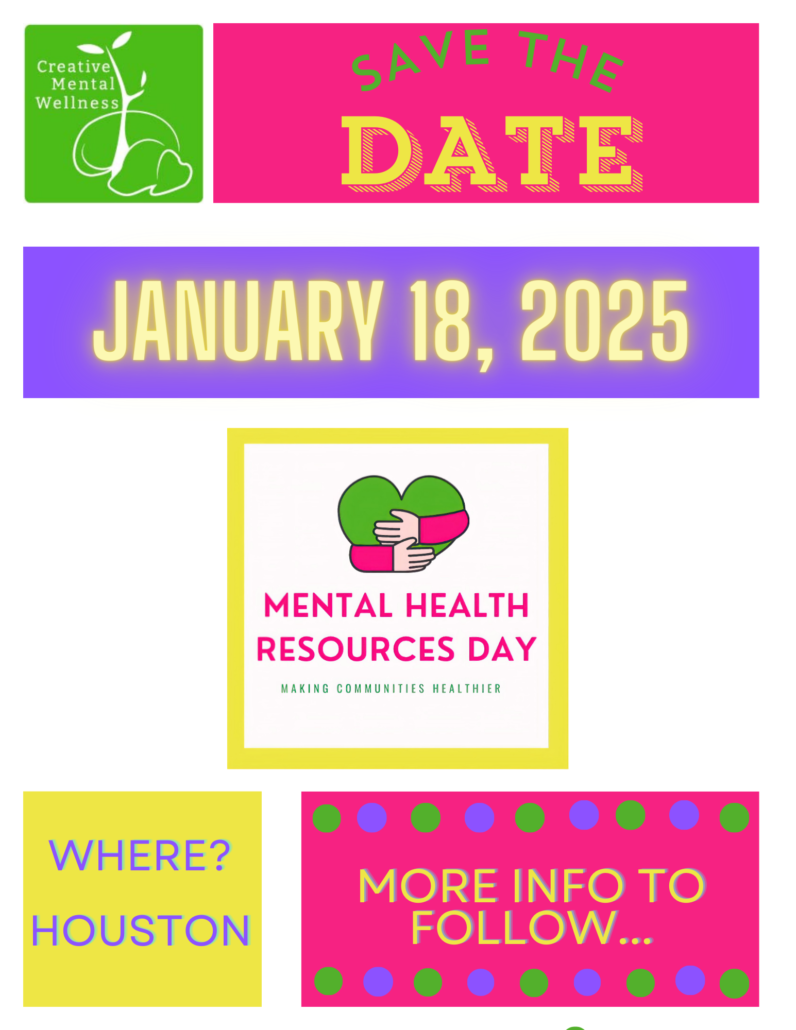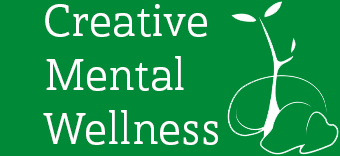December 2024 Newsletter
December 5 is Light Up a Life Day
Reduce Stress This Holiday Season
The holidays are known to be stressful, and can be even harder if you have lost a loved one you used to spend the holidays with. To help reduce stress around the coming holidays, there are a number of techniques you could try, like yoga and meditation, gratitude practices, baking, and spending time in good company. It can be difficult with the pressures to decorate, buy gifts, or host loved ones, but this season is also a good opportunity to appreciate what you have and those you love. If you choose to give gifts, try doing a gratitude practice beforehand – everyone could even write down what they are grateful for, if you don’t want to verbally say what you’re grateful for. Fostering a sense of gratitude can have positive effects on mental wellness and fortitude, thereby reducing stress and improving mood.
Nami also has great resources on managing your mental health during the holidays:
Surviving Painful Holiday Emotions
Avoiding Holiday Stressors
Mindfulness and Meditations for the Holiday Blues
DAISY’s Book Club
DAISY found Bowling Alone: The Collapse and Revival of American Community by Robert D. Putnam an interesting and informative read. It is, as the title suggest, about the lack of community in America, and some of the reasons Americans have shifted away from community, including politics, TV, and a decrease in church-goers. Many people may feel like social media and cell phones are the main cause, but the author says, “voting, giving, trusting, meeting, visiting, and so on had all begun to decline while Bill Gates was still in grade school.”

Updates in the Mental Health Sphere and DAISY’s World
Studies have shown that gratitude can reduce feelings of loneliness! If you are feeling lonely, try adopting a gratitude practice – whether you say, write or just think about what you are grateful for, it can help alleviate some of your loneliness.
Creative Mental Wellness has been accepted into the Kroger Community Rewards program! When you shop with your Kroger account, you can help support our mission!


Thank you for joining us on this mental health journey! Follow us on Instagram, Facebook or LinkedIn to stay up to date.
Your friend,

CONNECTION: a Tool of Mental Health
Connection, in the context of human relationships, is a fundamental aspect of our well-being and serves as a powerful tool for promoting mental health. It encompasses the establishment and nurturing of meaningful relationships, offering a sense of belonging, support, and fulfillment.
WHAT IS CONNECTION????
CONNECTION is the act of establishing and nurturing relationships with others. It involves emotional bonds, mutual understanding, and a sense of belonging. CONNECTION is a tool of mental health as it plays a crucial role in promoting overall well-being and psychological resilience. It provides a support system that helps individuals navigate through life’s challenges, share experiences, and alleviate feelings of loneliness or isolation. CONNECTION fosters empathy, understanding, and validation, allowing for emotional expression and the building of a strong social network.
WHY DOES CONNECTION TO OTHER PEOPLE MATTER TO ME????
It is necessary for a person’s mental health to be connected to other people due to our inherent social nature. Humans are social beings, wired for connection and companionship. The absence of meaningful connections can have detrimental effects on mental health, leading to feelings of loneliness, depression, and anxiety. Connectedness to others provides emotional support, a sense of purpose, and validation of our experiences. It allows for the sharing of joys and sorrows, the ability to seek guidance or advice, and the cultivation of a sense of belonging. Connectedness serves as a buffer against stress, promotes resilience, and contributes to positive self-esteem and a healthy sense of identity.
EXAMPLES OF CONNECTIONS
Types of connections can be diverse and multifaceted, ranging from personal to professional and encompassing various aspects of life. Hobbies can serve as a connection point, bringing together individuals with shared interests and passions. Jobs, careers, and professions provide opportunities for professional connections, mentorship, and collaboration. School environments foster connections among peers, teachers, and mentors, creating a sense of community and shared learning. Situations in life, such as parenthood, can connect individuals through shared experiences and challenges. Age can be a basis for connections, as individuals from similar age groups may share common life experiences and understand one another’s perspectives. Appreciation of music, art, and film can create connections through shared cultural interests. Common interests, where you grew up, and religious affiliations can also be powerful sources of connection, bringing individuals together based on shared values, beliefs, and
experiences.
CONNECTION & COMMUNITY
The relationship between connection and community is symbiotic and greatly impacts the quality of life. Connection to a community provides a sense of belonging, shared values, and social cohesion. It allows individuals to contribute to something larger than themselves and fosters a sense of purpose and meaning. Communities offer support networks, resources, and opportunities for social engagement and mutual growth. In turn, strong connections within communities strengthen the overall fabric of society, promoting resilience, collective well-being, and social harmony. The presence of a supportive community can enhance individual mental health by reducing isolation, providing a sense of safety, and offering avenues for personal and collective growth.
HOW A GLOBAL PANDEMIC IMPACTED HUMAN CONNECTION
The recent global pandemic has profoundly impacted how people connect with one another. Social distancing measures, lockdowns, and restrictions on gatherings have forced individuals to adapt to new ways of connecting and maintaining relationships. The pandemic has presented unique challenges and barriers to traditional forms of connection. While digital connectivity has played a crucial role in bridging physical distances through video calls, messaging apps, and social media, it cannot fully replicate the depth of in-person connection. The absence of physical touch, non-verbal cues, and the challenges of building new connections during a time of increased anxiety and uncertainty have made it more difficult for people to.
CONNECTION, SUPPORT, & COPING WITH LIFE’S ADVERSE CIRCUMSTANCES
Connection to other people serves as a vital support system that plays a crucial role in helping individuals cope with life’s adversities. The presence of strong and meaningful connections provides a sense of comfort, understanding, and empathy during difficult times. Here are some key ways in which connection to others acts as a support system:
EMOTIONAL SUPPORT: Connected relationships offer a safe space for individuals to express their emotions and share their struggles. Having someone who listens without judgment, offers empathy, and provides a shoulder to lean on can significantly alleviate emotional distress. Through open and honest communication, connections help individuals process their feelings, gain perspective, and find solace in knowing that they are not alone.
- PRACTICAL SUPPORT: Connections can provide practical assistance during challenging situations. Friends, family members, or community members can offer practical help, such as providing resources, offering advice, or assisting with day-to-day tasks. This support can lighten the burden and make it easier to navigate through difficult circumstances.
- VALIDATION & PERSPECTIVE: Connections provide validation of our experiences and feelings. When facing adversity, it is reassuring to have someone who understands and acknowledges the validity of our emotions and struggles. Additionally, connections offer diverse perspectives and insights, broadening our understanding of the situation and helping us consider different approaches to coping or problem-solving.
- ENCOURAGEMENT & MOTIVATION: Connected relationships provide encouragement and motivation, helping individuals stay resilient in the face of adversity. The support and belief that others have in our abilities can boost our confidence and determination. Having someone who cheers us on, reminds us of our strengths, and encourages us to keep going can make a significant difference in our ability to cope and persevere.
- SHARING EXPERIENCES & COPING STRATEGIES: Connections enable the sharing of experiences, including how others have coped with similar adversities. Learning from others’ stories and strategies can provide guidance and inspiration. It allows individuals to gain new insights, discover effective coping mechanisms, and develop a sense of hope that they, too, can navigate challenging circumstances.
- SENSE OF BELONGING: Connection to others instills a sense of belonging, which is particularly crucial during difficult times. Feeling connected and accepted by others creates a sense of unity and solidarity, reminding individuals that they are part of a larger support network. This sense of belonging strengthens resilience, as individuals draw strength and comfort from their connections, knowing they are not alone in their struggles.
It is important to nurture and maintain connections even when we are not facing immediate challenges. Building and strengthening relationships during times of relative calm establishes a solid foundation of support for when adversities arise. By investing time and effort in cultivating connections, we build a network of support that can help us cope with life’s adversities and enhance our overall well-being.
“Good” Grief
Here’s a question. Daisy & I have discussed at length: Is there such a thing as GOOD GRIEF?????
OK-here’s what we came up with…ready?…REALLY READY?????
Quick answer: ABSOLUTELY!
You CAN have GOOD GRIEF! It is possible to experience GRIEF in a positive way! But first, before we share our suggestions for putting a positive-ish spin on navigating feelings of loss, let’s talk more about GRIEF.
Grief is a complex and multifaceted emotion that is commonly associated with the loss of a loved one. Grief is a natural response to loss of someone or something, and it manifests differently for each individual. It is an emotional journey that involves a profound sense of sadness, longing, and emptiness.
While grief is often associated with the death of a person, it can extend beyond death to encompass a wide range of experiences and relationships. it can be triggered by the loss of opportunities, relationships, careers, education, and even pregnancies. The grieving process may also be associated with events that never occurred, including infertility and the loss/lack of a relationship.
The experience of grief exists on a spectrum of intensity, varying from person to person and influenced by various factors. Grief is not a “one-size-fits-all” emotion but rather a deeply personal and individual experience. The intensity of grief can be influenced by the nature of the loss, the relationship with the person or thing lost, the individual’s coping mechanisms, support systems, and personal resilience. Some individuals may experience profound and all-encompassing grief that significantly impacts their daily lives, while others may navigate grief with a more manageable level of intensity. It is important to recognize and honor the unique spectrum of intensity that exists within grief, understanding that there is no right or wrong way to grieve and that each person’s journey is valid and worthy of support and compassion.
GRIEVING Lost Opportunities: Throughout our lives, we encounter numerous opportunities that we may miss out on due to circumstances or personal choices. These lost opportunities can evoke a sense of grief and longing for what might have been. The most challenging lost opportunities can be the ones that are choosing between 2 really good choices or 2 really challenging ones. (And just in case anyone is wondering how WE feel…Yes, it IS possible to GRIEVE something that you knowingly choose for yourself–probably because your CHOICES are limited or nonexistent. Just remember to have GRACE with yourself in those cases!💚)
GRIEVING Lost Pregnancies: The loss of a pregnancy, whether through miscarriage, stillbirth, or termination, can bring about intense grief. Expectant parents often invest their hopes, dreams, and emotional connections into the unborn child, and when that future is suddenly shattered, they may experience profound sorrow, a sense of loss, and a grieving process.
GRIEVING Relationships (That Never Happened): Human connections play a vital role in our lives, and the absence of a desired relationship can cause grief. This can include unrequited love or the longing for a connection with someone who never reciprocated our feelings. We may mourn the loss of what we imagined the relationship could have been, the experiences we would have shared, and the emotional support we longed for.
One specific area of GRIEF we would like to address is that of INFERTILITY. There are different types of infertility, and we will address primary and secondary infertility and subfertility.
Primary Infertility – Primary infertility refers to the inability to conceive a child naturally. Individuals or couples who face this challenge may experience grief over the loss of the imagined biological child and the traditional path to parenthood. They mourn the biological bond, the joy of pregnancy, and the shared experiences that they might never have.
Secondary Infertility – Secondary infertility occurs when a person or couple struggles to conceive after having one or more biological children. This can lead to grief as they long for another child and grapple with the realization that their family plans may not unfold as they envisioned. The grief may arise from the lost opportunity to expand their family and the complexities surrounding their expectations.
Subfertility – Subfertility refers to a reduced fertility level that can make it challenging to conceive naturally. Individuals experiencing subfertility may undergo a grieving process due to the difficulties they face in achieving pregnancy. The longing for biological parenthood and the uncertainties surrounding their reproductive capabilities can cause significant emotional distress.
GRIEVING Jobs/Careers: Losing a job or a promising career opportunity can be devastating and lead to a profound sense of grief. We invest significant time and effort into building our professional lives, and the sudden disruption of our plans can leave us feeling lost and bereaved. The loss of financial security, professional identity, and the potential for growth and success can trigger a grieving process.
GRIEVING Education/Degrees: Education can play a crucial role in shaping the future and opening doors to various opportunities. When circumstances prevent us from pursuing the education or degrees we desire, it can generate feelings of grief. This could be due to financial constraints, personal responsibilities, or missed academic opportunities. The loss of educational aspirations can leave a lasting impact on our self-esteem and personal growth.
GRIEVING Lost Relationships: Grief is not confined to the loss of loved ones through death or divorce. We can also mourn the loss of relationships with people who were never our parents but still held a special place in our lives. This might include extended family members, family friends, or mentors who played significant roles in our upbringing or emotional support. When these relationships end abruptly, we may experience grief over the absence of their presence and the void it creates.
So how does one practice GOOD GRIEF?
Practicing “good grief” is indeed possible and can contribute to a healthier and more constructive grieving process. Good grief involves embracing and navigating through the stages of grief in a way that allows for healing, growth, and eventual acceptance. In this article, we will explore the concept of good grief and provide examples of how it can be practiced.
1. Allowing Yourself to Feel: Good grief begins with giving yourself permission to experience and express your emotions fully. It’s essential to acknowledge and accept the range of feelings that come with grief, such as sadness, anger, guilt, or even relief. By allowing yourself to feel, you create space for the healing process to unfold.
Example: Sarah recently lost her job unexpectedly. Instead of suppressing her emotions, she allowed herself to feel disappointment, anger, and uncertainty. She expressed her feelings through journaling and sought support from friends and family, allowing herself to process the loss and move forward.
2. Seeking Support: Surrounding yourself with a support system can be instrumental in practicing good grief. Connecting with understanding friends, family members, or joining support groups can provide a safe space for sharing experiences, receiving validation, and gaining different perspectives. Professional counseling or therapy can also be beneficial in navigating the complexities of grief.
Example: After the death of his spouse, David joined a grief support group where he found solace and understanding from others who had experienced similar loss. Through sharing their stories and supporting one another, they practiced good grief together, providing comfort and guidance on their healing journeys.
3. Practicing Self-Care: Taking care of your physical, emotional, and mental well-being is crucial during the grieving process. Engaging in activities that bring you joy, practicing mindfulness or meditation, maintaining a healthy lifestyle, and prioritizing self-compassion can all contribute to good grief.
Example: Maya, grieving the end of a long-term relationship, focused on self-care by incorporating regular exercise, meditation, and spending time in nature. She also sought professional help to develop healthy coping strategies and nurture her emotional well-being. By prioritizing self-care, she gradually found healing and resilience.
4. Honoring Memories: Celebrating and honoring the memories of what or who was lost can be an integral part of good grief. Creating rituals, dedicating a space for reflection, or engaging in activities that commemorate the person or experience can help in the healing process. It allows for a sense of closure while keeping the memories alive.
Example: Mark, after losing his beloved pet, created a memory box filled with pictures, favorite toys, and mementos. He also planted a tree in the backyard as a living tribute to his furry companion. By honoring the memories, Mark found comfort in cherishing the time they had together and gradually embraced a new normal without his pet.
5. Finding Meaning and Growth: Good grief involves seeking meaning and personal growth through the grieving process. It may involve reflecting on lessons learned, identifying personal strengths, or finding ways to channel the loss into positive actions or contributions. (We’re especially big fans of this one! Translating ENERGY involved in grieving whatever you’ve “lost” –which doesn’t always FEEL positive–into doing something helpful to others gives those uncomfortable feelings PURPOSE.💚)
Example: Emily, who experienced a miscarriage, channeled her grief into advocacy work for pregnancy loss awareness. She started a support group, organized fundraising events, and shared her story to help others going through similar experiences. By finding meaning and using her loss to make a difference, Emily practiced good grief and found purpose in her journey.
In conclusion, practicing GOOD GRIEF is possible and can significantly contribute to the healing process. By allowing oneself to feel, seeking support, practicing self-care, honoring memories, and finding meaning and growth, individuals can navigate grief in a way that promotes healing, resilience, and eventual acceptance. Each person’s grief journey is unique, and practicing good grief involves finding strategies and approaches that resonate with their own needs and experiences.
How to Select Recipes
💚= pertaining to MENTAL HEALTH
❤️= pertaining to PHYSICAL HEALTH
💚 KEEP IN MIND: Some days are better than others. If you don’t have enough energy (right now) to prepare an entire meal, just DO YOUR BEST FOR NOW. Eat as healthy as you can, but take care of yourself. Once you feel better, you can try hard-er again.
💚❤️CONSIDERATION FOR MAKING HEALTHY CHOICES:
“Healthy” doesn’t have to be synonymous with “flavorless.” Smart food choices can include flavor AND nutrition. Using herbs and spices–especially fresh ones–can enhance healthier food and make healthy choices easier to make.
💚❤️ACTIVITY LEVEL:
Let’s be real: Many of us don’t LOVE exercising! However, relative to “normal” human needs, just as we need nutrition, we also need to move. If you consume more, it’s better to move more. When you’re not very active, your intake should be less than when you’re more active. It’s not easy being completely truthful with yourself (about your actual nutritional needs), but HONESTY WITH YOURSELF enables you to more successfully manage your nutrition
💚 MODERATION IS THE KEY:
…and speaking of HONESTY, sometimes many of us overeat–even the best PLANNERS make “less healthy” choices! This is where GRACE with yourself becomes important. Please don’t think negative thoughts about not making the best choices! Rather, have grace with yourself and just TRY TO DO BETTER NEXT TIME!
❤️PLANT-BASED CHOICES:
Plant-based food is gaining in popularity. However, just because it’s plant-based doesn’t mean it’s healthy. When evaluating the nutrition, be aware of the fat content as well as how healthy the plant aspect of the food is. Note whether/what nutrients and vitamins are available within the selected foods.
💚❤️DIET VERSUS LIFESTYLE:
Another note for preventing disordered eating: Eating healthy should be your lifestyle NOT a diet. Diets can be correlated with anxiety and depression. When making healthy choices is your “normal,” you’re more likely to be less anxious. As mentioned above, MODERATION IS THE KEY!
Step 1: Evaluate Your Nutritional Needs
Before choosing a healthy recipe, it is crucial to understand your nutritional needs. Nutrients such as carbohydrates, protein, fat, vitamins, and minerals are essential for a healthy diet. However, the ideal amount of each nutrient for an individual depends on various factors such as age, lifestyle, and health status. For instance, athletes require more protein to support their muscles, while individuals with high blood pressure need to limit their sodium intake. When considering nutrition, try to be cognizant of (and honest about) making choices to meet your health needs.
Step 2: Choose Whole Foods
Whole foods are unprocessed or minimally processed foods that are rich in nutrients. They include vegetables, fruits, whole grains, legumes, nuts, and seeds. Whole foods provide essential nutrients such as fiber, vitamins, and minerals while reducing the risk of chronic illnesses. Therefore, it is advisable to prioritize whole foods when selecting healthy recipes. Because whole foods are without all the processing, you can be more aware of what is in your food. Less processing means less unneeded chemicals.
Step 3: Check the Nutritional Information
When choosing a healthy recipe, it is essential to read the nutritional information provided. The nutritional information should include the serving size, calories, macronutrients (carbohydrates, protein, and fat), and micronutrients (vitamins and minerals) in the recipe. You can use this information to determine if the recipe matches your nutritional needs. For example, a recipe that is high in calories but low in protein may not be suitable for individuals who require more protein in their diet.
Artificial additives and sweeteners are commonly used in processed foods to enhance flavor and extend shelf life. However, some additives may have adverse effects on health, especially when consumed in large amounts. Therefore, it is advisable to avoid recipes that contain artificial additives and sweeteners and instead opt for recipes that use natural ingredients.
💚 KEEP IN MIND: Try to Maintain a Balance Between HONESTY and GRACE
Always remember that PERFECTION IS IMPOSSIBLE. However, do YOUR BEST (“DUE DILIGENCE”) to make the healthiest choices you can at the time. Weight is somewhat important, but MENTAL HEALTH is the priority. If you struggle with obesity and/or disordered eating, PLEASE try to be honest but graceful with yourself. Try to ensure you are moving enough to legitimize what you’re eating. (This is ONLY said with honesty, respect, compassion, and kindness. I WANT YOU TO WIN! YOU DESERVE TO WIN!)
When selecting a recipe, skill level can be a consideration. However, in the age of YouTube, skill is not as much of a challenge. Whether you’re a chef in the making or you’ve been known to burn water, a little research and preparation can be ways to help yourself succeed. (YOU DESERVE TO SUCCEED!!!!)
The Essential Mental Health Pillars: CONNECTION, NATURE, & VOLUNTEERING
Improving one’s mental health doesn’t have to be complicated or costly. There are 3 MENTAL HEALTH PILLARS that are easily accessible and inexpensive, yet have a significant impact on enhancing one’s quality of life: CONNECTING to other people, spending time outdoors/in NATURE, and engaging in VOLUNTEERING.
Connecting to Other People
Human beings thrive on social connections for both practical and emotional reasons. Building and nurturing meaningful relationships with others is vital for our mental well-being and attaining an optimum level of health. When we connect with others, we experience a sense of belonging, support, and understanding. This connection provides emotional nourishment and helps us navigate life’s challenges.
Benefits of connecting to other people for mental health include:
Emotional Support: Sharing our thoughts, feelings, and experiences with trusted individuals can provide a sense of validation and comfort. It allows us to feel understood and less alone in our struggles.
Increased Resilience: Social support networks offer a safety net during difficult times. They provide us with resources, advice, and different perspectives, enhancing our ability to cope with stress and adversity.
Positive Influence: Being around supportive and positive individuals can inspire us, boost our self-esteem, and encourage personal growth. It helps create a nurturing environment where we feel empowered to pursue our goals and aspirations.
💚💚 NOTE: A Comment About CONNECTING WITH OTHERS in 2023
Connecting with a diverse group of people–including those who share our values as well as those who hold different perspectives–offers a range of benefits for personal growth and mental well-being. One significant benefit is the opportunity to learn and practice getting along with individuals from diverse backgrounds and thoughts, which can contribute to lowering anxiety levels. When we engage with people who have different beliefs and experiences, it challenges our own perspectives and expands our understanding of the world. By actively seeking out diverse connections, we learn to navigate and appreciate differences, fostering empathy, tolerance, and open-mindedness. This process helps to reduce anxiety by reducing the fear and discomfort that may arise from interacting with individuals who are different from us. Embracing diversity and building connections across various backgrounds enhances our social skills, broadens our knowledge, and promotes a more inclusive and harmonious society. From a practical standpoint, we just FEEL better when we have positive connections with others.
Unfortunately, in today’s fast-paced and digitally connected world, genuine human connection often takes a backseat. Factors such as social media dependency, busy schedules, and societal pressures can hinder our ability to form deep and meaningful connections. It is crucial to make a conscious effort to prioritize face-to-face interactions, engage in active listening, and foster supportive relationships. YOU DESERVE THE HIGHEST LEVEL OF HEALTH…AND YOU’RE WORTH IT!!!!!
💚💚 NOTE: CONNECTIONS and COMMUNITIES
When discussing the importance of connecting to others, it is crucial to highlight the relationship between connections to individuals and communities. Building connections with people on an individual level is significant and allows us to establish deep and meaningful bonds, providing a sense of belonging and support. However, connections to communities go beyond individual relationships and play a vital role in our overall well-being. Communities provide a broader sense of identity, shared values, and a sense of belonging to something larger than ourselves. They offer opportunities for collective action, social engagement, and mutual support. Community connections foster a sense of solidarity, social cohesion, and shared responsibility, ultimately contributing to the overall health and resilience of individuals within the community.
By acknowledging the importance of both individual and community connections, we can cultivate a holistic approach to building and maintaining meaningful relationships, benefiting not only ourselves but also the larger social fabric in which we exist.
Increasing Time Spent Outdoors in Nature
Nature has a profound impact on our mental health. It provides a sanctuary away from the demands and stressors of daily life. Spending time outdoors in natural environments can have a rejuvenating effect on our mental well-being. Being outdoors in the sunshine and fresh air, surrounded by plants and animals, offers numerous benefits for our well-being. Additionally, observing and interacting with animals can spark a sense of wonder and appreciation for the beauty and diversity of the natural world, fostering a deeper connection with our environment.
Benefits of spending time outdoors for mental health include:
Stress Reduction: Just spending time outdoors in nature can have a calming effect on the mind and body. The sights, sounds, and smells of natural surroundings can help reduce stress, anxiety, and depression. It promotes relaxation and improves overall mood. Sunshine stimulates the production of needed vitamin D. Connecting with nature allows us to disconnect from the stressors of daily life, promoting relaxation, reducing anxiety, and improving our mood. Being in the presence of plants and animals has a calming effect on the mind, fostering a sense of peace and harmony.
Enhanced Cognitive Function: Being in nature has been linked to improved focus, creativity, and problem-solving abilities. It allows our minds to relax, recharge, and function at their best. Breathing in fresh air promotes a sense of rejuvenation and clarity, improving cognitive function and overall mental well-being.
Physical Activity and Well-being: Ensuring physical activity is included as part of a healthy lifestyle is a way to CARE FOR YOURSELF! Taking care of your body also helps care for your mind.
Physical activity helps improve cardiovascular health, strengthens muscles and bones, and enhances overall physical fitness. Regular exercise also plays a crucial role in weight management, reducing the risk of chronic diseases such as obesity, diabetes, and heart conditions.
Stimulating the production and release of various neurotransmitters in the brain is another positive effect of physical exercise. Such neurotransmitters have a direct impact on our mood and mental well-being. For instance, exercise increases the production of endorphins, which are natural chemicals that act as painkillers and mood boosters. These endorphins create a sense of euphoria and overall well-being, often referred to as the “runner’s high.”
Physical activity also promotes the release of serotonin, a neurotransmitter known for its role in regulating mood, sleep, and appetite. Higher serotonin levels are associated with improved mood, reduced symptoms of depression, and increased feelings of happiness and contentment.
Additionally, physical activity increases the production of dopamine, which is involved in reward and motivation pathways. Dopamine release during exercise can contribute to a sense of pleasure, motivation, and a positive outlook on life. Overall, the stimulation of neurotransmitter production through physical activity creates a chemical cascade that positively impacts mood, promoting feelings of happiness, relaxation, and overall mental well-being.
Exercise has been shown to reduce symptoms of anxiety and depression, improving mental resilience and self-esteem. It can also enhance cognitive function, including memory, attention, and problem-solving abilities. Engaging in physical activity provides an outlet for stress, helps in managing emotions, and fosters a more positive outlook on life.
Engaging in outdoor activities, such as walking, hiking, or gardening, combines the benefits of nature and exercise.
Volunteering
Volunteering not only benefits the community but also has a positive impact on mental health. Focusing on helping others and engaging in acts of service provides a sense of purpose, satisfaction, and fulfillment.
Benefits of volunteering for mental health include:
Increased Self-Esteem and Purpose: Volunteering gives a sense of meaning and value by contributing to something larger than oneself. It enhances self-esteem, self-worth, and personal identity.
Reduced Feelings of Isolation: Engaging in volunteer work connects us to a community of like-minded individuals. It fosters social connections and combats feelings of loneliness and isolation.
Distraction from Ruminating Thoughts: By directing our focus and energy toward helping others, volunteering can divert attention from our own problems and negative thought patterns. It promotes a positive mindset and resilience.
Although volunteering has numerous benefits, it is often overlooked due to perceived time constraints or the belief that personal problems should take priority. It is important to recognize that even small acts of kindness and service can make a significant difference in our own well-being and the lives of others.
💚💚 NOTE OF MOTIVATION (for CONNECTING, being in NATURE, and VOLUNTEERING more): Being healthier generally makes navigating life easier. When we FEEL better, we tend to be more EFFICIENT/PRODUCTIVE/EFFECTIVE and HAPPIER!!!! 😀







